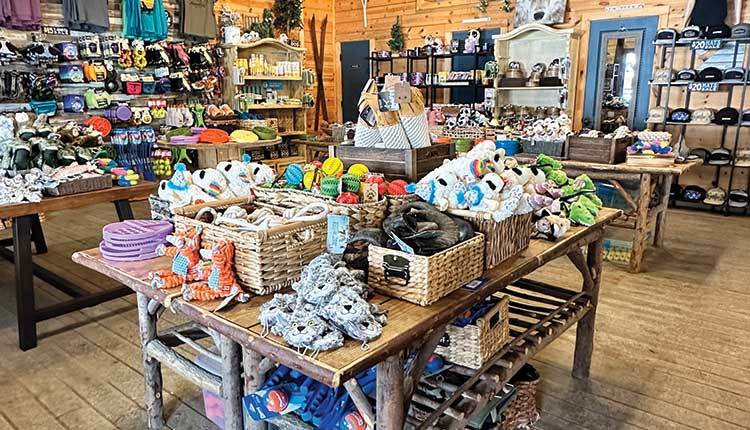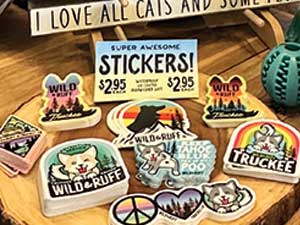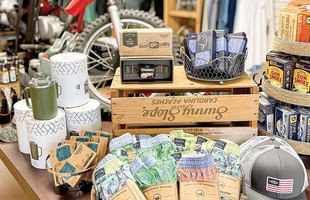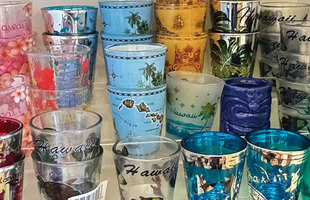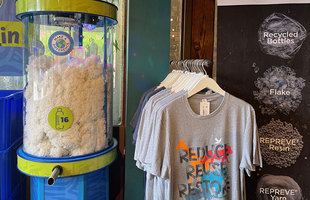It’s not uncommon for the family pet to be invited on the family vacation. In fact, the American Pet Products Association reports that nearly 78% of the 90.5 million homes with furry companions bring their pets along for the ride.
Even those who don’t bring the pet often pick up a treat or stuffie as a souvenir because owners believe they are part of the family as much as any human, according to the 2024 Pet Ownership Statistics report from Forbes Advisor.
So it’s probably no surprise that pet souvenirs and gifts can also be a lucrative category for gift and souvenir stores. Whether you carve out a corner for pet accessories or your store is dedicated to pets and their owners, here are some tips on how to make the most of the space.
1. Focus on the front door. Wild & Ruff uses every bit of its 1,400 square feet, but it’s the first 10 feet from the front door that make all the difference, says Jamie Vine, owner of the Truckee, California, store dedicated to gear and gifts for dogs and dog lovers.
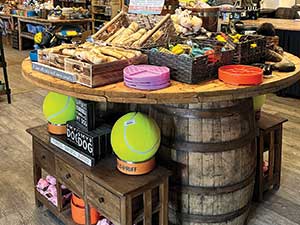
A round table with top-selling products greets customers walking into Wild & Ruff.
“The more bright, fun colors I have in the front of the store, the more people touch and feel and buy those products within the first 10 feet of the store,” Vine notes. “I put my bestselling chews and treats — they’re six feet from the front door — and every day, people come in, touch it, grab it and ‘oh my gosh, what’s this?’”
Her No. 1 selling product, Woodies all-natural dog chew wooden sticks, sold 3,000 units in four months greeting customers on a table as they walked in. And her second-best seller, Himalayan Original Yak cheese dog chews, had a seat at the same round table with a whiskey barrel base.
Among the rustic wooden tables, steel shelves and giant wooden spools, squishies and squeakers fill baskets and bins while jackets, shirts and hats line the store's slatwall that cascades down to dog beds, mugs and figurines on lower fixtures.
2. Make it look like a candy store. With all of the bestsellers up front, one might wonder what goes in the back of the store. Vine points to “obvious” must-haves like stuffed toys, tennis balls and shampoo, but also recommends leading with a bit of eye candy to make displays eye catching.
Within 18 months of the grand opening of Wild & Ruff, Vine says, she realized her display techniques weren’t flawless.
“At one point, I thought, ‘let’s put all the tough chews on this table. Let’s put all the soft and cute stuffed animals on this table, and put all the bowls and feedings things on this table,’” she says. “We can just tell people which back table to go to if they’re looking for a certain item.”
But Vine says she began noticing certain tables weren’t touched at all. So she seized the opportunity to make some changes.
“I mixed it up and I divided it by color and size and cuteness instead of by type,” Vine explains. “I’ve learned that if I put a little here and a little here, it’s still a toy table, but I’ve got hard, medium and soft. I’ve got vintage, leather and cute. I’ve got something bright, something big and something small. And then I try and put pops of color on each table.”
After thoughtfully toiling over each table, Vine says, she has one heck of a visual feast for customers with the colorful displays.
“I make it look like a candy store,” she admits.
3. Don’t move anything. For Debbie Allen, owner of Blackie’s Backyard in Eureka Springs, Arkansas, grouping items is key, but for a different reason. In her 400-square-foot store, space is of premium importance and not to be wasted.
And while she carries all of the usual suspects — like harnesses, leashes, collars, toys, bandanas, bow ties, treats, chews and dishes — merchandise is not moved around the store.
“I don’t move stuff around very often. I’ve been here 11 years and I’ve got my inventory pretty much figured out what sells and what doesn’t,” Allen explains. “The store is so tiny, so you have to do it that way to keep it organized.”
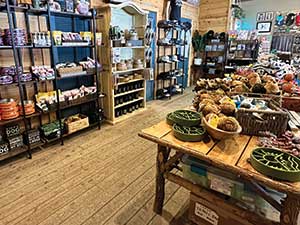
Wild & Ruff has had success organizing display tables by color and cuteness rather than by type of product.
Located in the Ozark Mountains of northwest Arkansas, the small town near the border of Missouri is known for its nearby mineral springs, Victorian architecture and art galleries — making it a hotspot for tourists and travelers.
“It’s one of those things where the person who walks through my door probably won’t be back until maybe the next year or something,” Allen explains. “They’re not really looking for anything, they’re on vacation. So, they just come in to see what you have. And you never know what you’re going to sell from day to day.”
To make an impact, Allen believes grouping is the only way to catch the short attention span of those wandering around before they quickly wander away.
“You need to keep things together,” she stresses. “Otherwise, people come in and they just get frustrated. If they’re looking for toys and you’ve got some in the front, and they think that’s all you have, they won’t come to the back.”
4. Group by brand to create an upsell. At the Queen Bee Honey Emporium, Mandeville, Louisiana, Owner Deborah Nabors has learned a thing or two about merchandising dog and cat wellness products since her boutique opened in August 2022. While grouping items together is no secret, she believes there’s success in grouping by brand because it creates an opportunity to upsell.
“Put the products in the brand category. If you have one brand that has a body spray, shampoo, conditioner and an ear cleaner, group them by brand,” she says. “Customers will be like ‘oh, they have an ear cleaner. I love the shampoo and they have an ear cleaner. I’m going to get that, too.’ So, it’s a way to upsell.”
The former holistic mobile dog groomer has forged a path of her own offering organic health and wellness products for pets and humans as well as all-things honey to consume and groom. From organic treats, jerky and chews to herbal supplements to grooming products, her selection and knowledge are what customers crave.
5. Educate sales associates on products. Having knowledgeable employees is another way to capture sales in this category.
“You’ve got to educate all your team members on all the products that you carry,” says Nabors. “Sales will still happen if you don’t, but you have an opportunity to find out what they’re passionate about and that becomes their strength.”
Nabors explains one employee may love to take baths and use essential oils while a dog-lover employee may gravitate toward learning more about the pet sets and the various products available to pamper and primp a precious pooch.
“Everyone has strengths, so you want to utilize them to increase sales,” she notes.
Done right, even the dog will be begging to return the next time the family hops in the car and starts heading in your direction.
